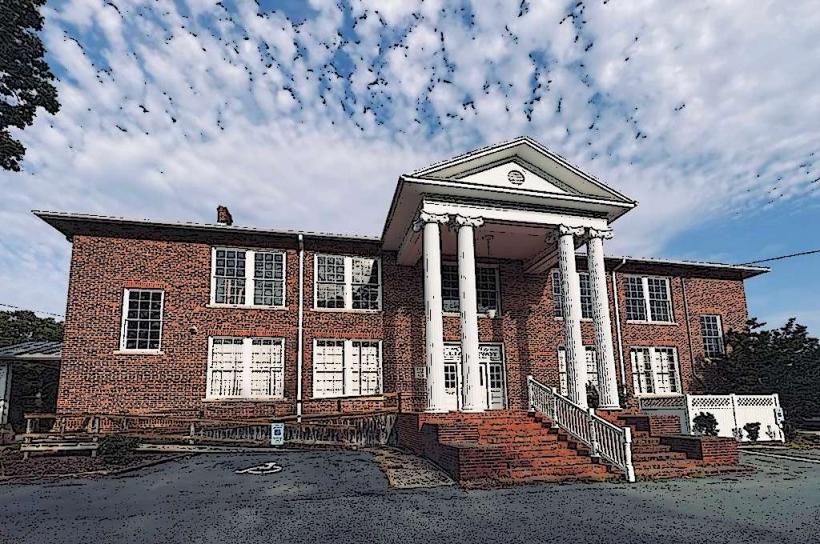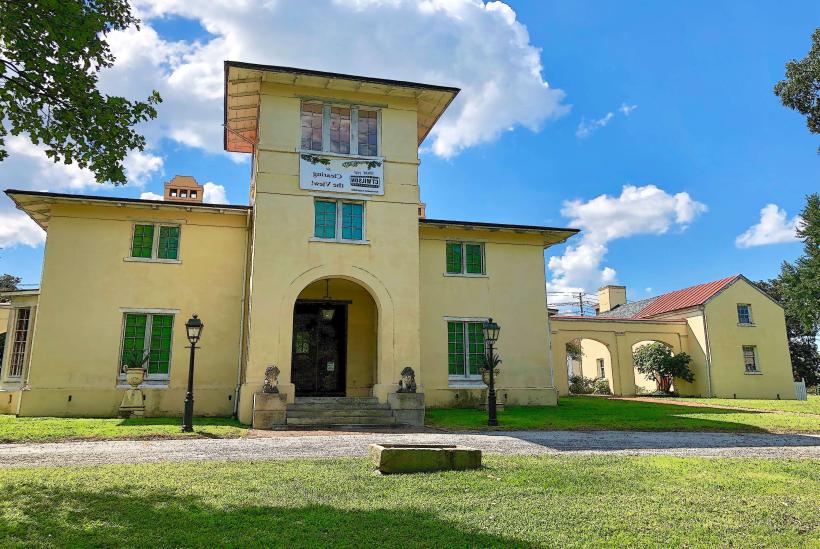Information
Landmark: Weatherspoon Art MuseumCity: Greensboro
Country: USA North Carolina
Continent: North America
Weatherspoon Art Museum, Greensboro, USA North Carolina, North America
Overview
On UNCG’s campus, the Weatherspoon Art Museum stands out for its commitment to collecting, preserving, and showcasing modern and contemporary art-its airy galleries often filled with bold colors and striking forms, simultaneously it welcomes students and faculty alike, and opens its doors to the wider public, buzzing like a lively cultural hub at the heart of the Southeast.The museum traces its beginnings to 1941, when it opened as the Woman’s College Art Gallery, its first walls lined with paintings in warm afternoon light, equally important in its early days, it was a humble setup tucked into a former physics lab in the McIver Building at Woman’s College-later known as UNCG-with chalk dust still clinging to the walls.Gregory Ivy, the Art Department’s first chair, launched the gallery with a clear mission: to create a resource that would deepen students’ learning and spark a love for art across campus, where sunlight often spills across the walls, in turn in 1942, the gallery took on a modern name-the Weatherspoon Art Museum-in tribute to Elizabeth McIver Weatherspoon, a former student and admired art teacher whose steady guidance helped shape its growth and vision.Over the years, the museum grew from a simple teaching gallery into a fully accredited institution, earning recognition from the American Alliance of Museums and proving its dedication to professional curation, careful preservation, and thoughtful education, in addition the Weatherspoon Art Museum houses a permanent collection of about 7,000 pieces, with its focus on American art spanning from the 20th century to today-paintings where you can almost smell the fresh oil and view the brushstrokes glisten.This collection draws its power from a rich mix of voices and ideas, with a strong focus on works on paper, bold paintings, intricate sculptures, striking photographs, and layered mixed-media pieces, as a result the museum’s treasures include several standout collections, chief among them the Claribel and Etta Cone Collection, an early, influential acquisition featuring bold modernist works by Henri Matisse, Pablo Picasso, and Raoul Dufy-think rich blues, sharp lines, and bursts of color.The Cone sisters built an extraordinary collection, and it gave the Weatherspoon its standing in modern art-paintings so vivid you could almost feel the brushstrokes, equally important the Dillard Collection of Art on Paper holds about 600 pieces, featuring works by artists such as Louise Bourgeois, Eva Hesse, and Robert Smithson-delicate sketches, bold lines, and textures you can almost feel.It shows the museum’s commitment to uncovering how printmaking, drawing, and other paper-based media can speak-like ink bleeding into thick, textured paper, meanwhile c.LenoirThe Wright Collection holds North Carolina’s most extensive trove of Japanese ukiyo-e prints, gathered piece by piece by Wright, a UNCG professor with a deep focus on Asian art, to boot it adds a vital cross-cultural layer to the museum’s collection, like a radiant thread woven through its tapestry of artifacts.Through the Dorothy and Herbert Vogel Collection’s “Fifty Works for Fifty States” project, the museum received 50 contemporary works on paper, enriching its connection to prominent minimalist and conceptual artists-think crisp graphite lines and bold geometric forms that catch the light, meanwhile the museum showcases pieces by icons like Andy Warhol, Cindy Sherman, and Eva Hesse, underscoring its dedication to bringing bold, influential voices into the world of contemporary art.The Weatherspoon Art Museum keeps its calendar lively with exhibitions that dive into contemporary issues, revisit pivotal moments in art history, and spark connections with the local community-sometimes with pieces as striking as a splash of sparkling red across a canvas, equally important the museum hosts everything from solo retrospectives to themed group shows, blending its own paintings and sculptures with pieces on loan from other museums or tucked-away private collections.Recent and current exhibitions tackle urgent social topics-from the opioid crisis to questions of identity, culture, and the environment, sometimes with stark images that linger in the mind, besides the museum highlights rising artists with events such as the UNCG Master of Fine Arts Thesis Exhibition, giving fresh talent a stage where their work can catch the light.The museum puts education at the heart of its mission, offering programs that spark curiosity-like hands-on workshops where the scent of fresh paint fills the room, then it hosts group study sessions designed around university courses, giving students a chance to dive in and learn by doing-think solving real problems with pen and paper spread across the table.To be honest, The museum offers student internships and docent programs, giving future curators and teachers hands-on experience-like leading a gallery tour or cataloging a contemporary exhibit, while through workshops, lively lectures, and hands‑on projects, outreach programs bring contemporary art into the heart of Greensboro, inviting the whole community to take part.The Weatherspoon Art Museum sits in a custom-designed building on Spring Garden Street, built from the ground up to serve the precise demands of a modern art space, right down to the glowing, open galleries, after that the building features adaptable gallery rooms, each with precise lighting and steady, cool air to safeguard delicate pieces.The museum offers more than exhibits-it has a research library with shelves of worn, leather-bound volumes, shining classrooms, and welcoming spaces where people can gather, making it a true hub for learning, as a result you’ll find the museum at 1005 Spring Garden Street in Greensboro, NC-just a short stroll from campus and easy for anyone in town to reach, moderately Admission’s free, which draws in neighbors, families, and anyone curious enough to wander through the open gates, equally important you can visit the museum Tuesday, Wednesday, Friday, and Saturday between 10 a.m. And 5 p.m, or stay a bit later on Thursday, when it’s open until 8-the extra hours are perfect for lingering over a favorite painting, as a result you’ll find the door locked on Sundays, Mondays, and enormous holidays like Christmas.You can park for free just steps from the entrance, and the museum hosts guided tours and seasonal events all year to make every visit memorable, consequently the Weatherspoon Art Museum stands as a vital cultural hub for Greensboro, UNCG, and the entire Southeast, drawing visitors with the quiet hum of its sunlit galleries.To be honest, With its rich array of modern and contemporary works, plus bold programs and hands‑on educational efforts, the space invites people to explore art deeply and sparks sharp, thoughtful conversations, and the museum helps visitors grasp how artistic practices connect to social and cultural issues, earning its region as a vital destination for art lovers and scholars alike.The Weatherspoon Art Museum keeps cultural life thriving by safeguarding treasured works, nurturing emerging artists, and drawing in audiences from every corner-whether it’s a curious student pausing before a bold splash of color or a longtime resident revisiting a favorite piece.
Author: Tourist Landmarks
Date: 2025-10-03













